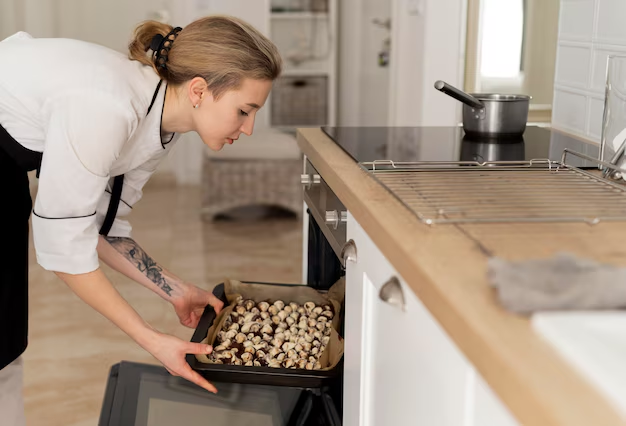Is It Safe to Put Warm Chicken in the Refrigerator? Everything You Need to Know
Ever finished a delicious chicken dinner and found yourself wondering, "Can I put this warm chicken in the fridge?" It's a common question that arises in kitchens worldwide, because it touches not only on safety but also on preserving food quality. In this comprehensive guide, we'll explore the best practices for refrigerating cooked chicken, delve into the science behind temperature control, and offer practical tips to keep your meals safe and tasty.
🍗 Why Temperature Matters
When it comes to food safety, temperature is crucial. The U.S. Department of Agriculture (USDA) and other food safety authorities often highlight the importance of keeping food out of the "danger zone," which is between 40°F (4°C) and 140°F (60°C). This is where bacteria such as Salmonella and E. coli can multiply rapidly, potentially leading to foodborne illnesses. So, controlling temperature is key to preventing these bacteria from spoiling your food.
What Happens When Chicken Cools?
When chicken is left out to cool, it can quickly enter the danger zone. Within this temperature range, bacteria can double every 20 minutes. That's why it's recommended to refrigerate cooked chicken within two hours of cooking. If the ambient temperature is 90°F (32°C) or higher, which can happen at indoor gatherings or outdoor barbecues, that window shortens to just one hour.
🌡️ Optimal Practices for Storing Warm Chicken
Though the common advice is to let food cool before refrigerating, recent expert consensus suggests that it's okay to refrigerate slightly warm chicken, contrary to some longstanding kitchen myths. Refrigerating while still warm can help minimize time spent in the danger zone.
Initial Cooling Tips
Avoid Sealing Hot: Allow some cooling before sealing in an airtight container, as steam could cause condensation and potentially alter texture and flavor.
Shallow Containers: Use shallow containers to help the chicken cool more evenly and quickly.
Use the Fridge's Power: Don't be afraid to let the fridge do its job. It's designed to handle the addition of moderately warm food without affecting your other groceries.
Key Benefits of Following These Practices
Preservation of Flavor and Texture: Minimizing time in the open air reduces the risk of the chicken drying out or worsening in taste.
Reduced Bacterial Growth: Quick refrigeration reduces potential exposure to bacteria, ensuring safer leftovers.
👩🍳 Cooling Techniques and Tips
If placing warm food in the fridge makes you uncomfortable, consider some quick-cooling techniques to facilitate a safer and more effective process.
Effective Cooling Techniques
Ice Bath: Place food containers in a larger container filled with ice water to speed up the cooling process.
Fan Assistance: Position a fan to lightly circulate air around the cooking area, hastening cooling.
Partitioning: Divide larger portions into smaller parts to allow them to cool quicker.
📋 Visual Summary: Top Tips for Refrigerating Cooked Chicken
Quick-Glance Tips for Safe Refrigeration 🧊
- Cool Promptly: Aim to refrigerate within 1-2 hours.
- Use Shallow Containers: For faster cooling, choose shallow containers.
- Separate Portions: Break down larger pieces or portions for quicker cooling and safety.
- Fridge's Capability: Trust your fridge can handle moderately warm food without temperature disruption.
- Sigmoid Cooling: Rest chicken on a rack to let airflow cool all sides evenly.
💡 Why Some Say You Shouldn’t Refrigerate Warm Food
There's a traditional belief that putting warm food in the fridge is harmful, especially regarding its impact on the appliance and surrounding food. Let’s explore these concerns.
Effects on the Fridge
While it’s true that adding warm food can slightly increase the refrigerator’s internal temperature, modern appliances are designed precisely to deal with such fluctuations. Ensuring the door isn’t left open unnecessarily is the best way to keep energy consumption and internal temperature stable.
Impact on Other Food
Concerns about warm food potentially heating surrounding food items are generally unfounded, given proper fridge maintenance and organization. Positioning warm items slightly apart or away from sensitive items like dairy or fresh produce can mediate any temperature adjustments.
🔍 What the Experts Say
Expert opinions have evolved significantly. Modern food safety authorities, including culinary and safety experts, endorse rapid cooling via refrigeration, citing negligible impact on crisply functioning refrigerators. Avoiding the danger zone remains a higher priority than worrying about temporary, marginal temperature increases within fridges.
🤔 Considerations for Reheating
After ensuring your chicken is safely stored, knowing how to reheat it properly is your next best step. Reheat leftovers to an internal temperature of at least 165°F (74°C) to ensure any potential bacteria are effectively neutralized.
Reheating Methods
Microwave: Quick and efficient for small portions; cover with a damp paper towel to maintain moisture.
Oven: Best for preserving flavor and texture, especially for larger portions or dishes like casseroles.
Stovetop: Quick for items like soups or stews, while constantly stirring ensures even reheating.
🎯 Practical Next Steps for Home Chefs
Understanding that you can indeed refrigerate warm chicken gives you more flexibility in managing meal prep without sacrificing safety or quality. Use a meat thermometer to reliably gauge safe temperatures when reheating, and always mark and date stored leftovers to track freshness.
Storage Duration
For optimal freshness and safety, consume refrigerated chicken within three to four days. For longer storage, consider freezing, which can preserve quality for several months.
Concluding Insight
Incorporating these proven practices into your kitchen routine not only keeps food safer but also potentially enhances its taste and longevity. With a proactive approach to refrigeration, you can enjoy your chicken meals with peace of mind, maintaining both food safety and flavor integrity.
With the correct practices and a better understanding of how temperature impacts your food, you’re set to make informed, confident decisions in your kitchen. Bon appétit!
